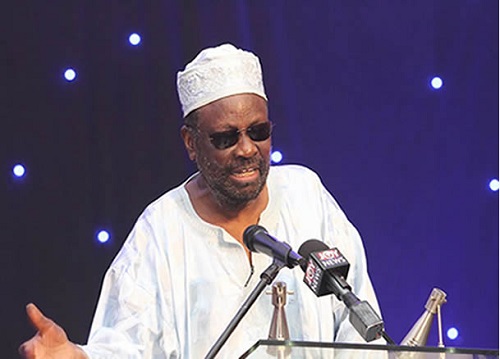N October 1962, a Third World War – a “thermonuclear war” between the Western allies and the Soviet Union, was averted by the narrowest of margins.
Like the invasion of Ukraine by the Russia today, the cause of that crisis was the fear of borders that were changing in nature.
Suddenly, the USA found its security being “threatened” by nuclear missiles that the USSR had
been trying to station in Cuba.
Now, Cuba is only 90 miles from the United States mainland, and the Americans, who had gone
to the extent of trying to safeguard their security from Soviet nuclear attack by forming an alliance with European countries called the North Atlantic Treaty Organisation (NATO), found the sudden change in their proximity to hostile nuclear weapons controlled by the Soviet Union, unacceptable.
So, the Americans told the Soviets to remove their missiles from Cuba.
They were in deadly earnest.
They sent warships to form a “quarantine zone” in the waters that separate Cuba from Europe.
The Soviets would have to cross the “quarantine zone” before reaching Cuba with their nuclear
missiles.
Soviet ships carrying missiles that attempted to break the “quar- antine zone” and reach Cuba
would be attacked, the Americans threatened.
This challenge by the Ameri- cans to the Soviets was the nearest thing to what historians call a casus belli (cause of war) the world had seen since the end of
the Second World War, in 1945.
How would the Soviets react to this challenge?
The situation amounted to what is called an “immovable object paradox.” This seeks to
answer the question, “What hap- pens when an
unstoppable force meets an immovable object?”
It took unusual diplomatic footwork to avert a Third World War that would have destroyed both the USA and the USSR. Plus a huge section of Planet Earth
besides.
But the Soviets, fortunately, withdrew their missiles from Cuba. To help them save face, the Americans too agreed to withdraw some missiles they had stationed in Turkey. The world heaved a sigh of relief.
The world lived under this condition – whereby a “balance of forces” made it suicidal for the USSR to attack the USA and vice versa – over half a century.
But then, the Berlin Wall fell in 1989. That event constituted a major disgrace to the USSR, for it
had demonstrated that the people of East Germany were not satisfied with the standard of living, plus
the political conditions, under which they were forced to live as members of the Soviet “empire”.
Many Eastern European coun-tries – including Hungary and Poland– also escaped from the
Soviet “net”, taking advantage of the fall of the Berlin Wall.
The Americans and their NATO allies do not seem to have considered one factor as they began triumphantly to “absorb” countries that had previously been members of the Soviets’ “Warsaw
Pact”. That factor was Russian pride.
Now, the Russians had not liked it one bit when the Soviet Prime Minister of the time, Mr Nikita Khrushchev, “climbed down” in 1962 and turned back Soviet ships going to Cuba rather, than let them break the American “quarantine”.
Neither had the Russians liked it when their leader, Mikhail Gor-bachev (in their view) “capitulated” to President Ronald Reagan, at a meeting with Mr. Gorbachev in November 1985.
The Americans and their allies rejoiced at what had happened to the “crumbled” Soviet Empire, and did not take seriously, warnings from some of their elder statesmen, such as George F. Kennan, that they should not be too triumphalistic over the breakup of the Soviet Empire, as that could
give rise to Russian revanchism in Europe.
That is precisely what has happened with regard to Russia’s invasion of Ukraine.
President Vladimir Putin, a former KGB officer who unhappily observed the slow breakup of the Soviet Empire from right inside the Soviet power structure,
believes that the NATO allies deceived Russia by assuring her that they would not threaten Rus-
sia’s security. What they did, instead, was to try and turn Russia’s former Soviet “subjects” into countries now hostile to Russia, at the instance of NATO.
Putin has seen the Americans “absorb” into NATO, Poland, Hungary, Latvia and other former Soviet allies (some of which have borders with Russia). Yet, the organisation that had pitted itself against NATO, the Warsaw Pact, had been dissolved. Who was
NATO’S new enemy then?
If the NATO allies had peaceful intentions towards Russia, why would they absorb the Eastern
European countries into NATO, in the first place? Why, in particular, would they promise to admit
Ukraine into NATO, when they knew that Ukraine had been a former constituent member of the
USSR itself, not just a member of the Soviet “empire” at large?
The unanswerable question Putin has put to NATO is this: Would the USA allow a country it does not trust – such as China or Russia – to station nuclear missiles in America’s neighbours, Canada or Mexico?
Cuba was a whole ninety miles away from the US. Yet the US was willing to risk nuclear war to turn
Soviet nuclear missiles away from Cuba. Why should the US, by admitting Ukraine into NATO,
enforce one law against Russia with regard to Ukraine, which the US did not allow to be applied to
Cuba?
Unfortunately, many people are going to die or suffer great misery, whilst this abstruse question is tossed about by Russia and NATO. This is the time when a strong Non-Aligned Movement (NAM) should be talking sense to the nuclear-missile-wielding antagonists, and thereby saving the lives of hapless Ukrainians.
But where is the NAM today? Meanwhile, let’s hope that Ghana can bring her students in Ukraine safely back home!!


